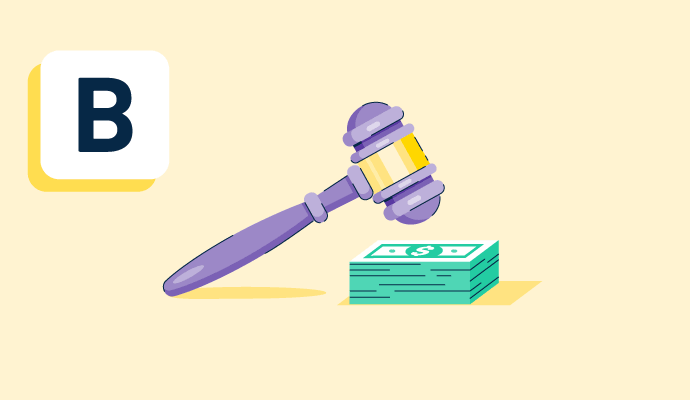What is back pay?
Back pay is the salary and other benefits owed to an employee by their employer. It fills the gap for discrepancies between the amount an employer paid an employee and what an employer was required to pay, as stated in the employee’s contract or offer letter.
Back pay is most often claimed in wrongful termination cases. Additional cases may include hourly or salary wages, overtime, bonuses, and commissions. As a result of a wage violation case, an employer is usually served a penalty to pay.
Organizations can use compensation management software to ensure that employees are paid properly. In addition to compensation packages, this software helps managers and HR departments manage salaries, plan employee bonuses, and recommend pay adjustments.
Reasons for back pay
The most common reason employees claim back pay is wrongful termination. In addition to wrongful termination, other situations where an employee may be owed back pay include:
- Employee was unfairly prevented from completing the job
- Commissions or unpaid bonuses
- Unpaid wages for overtime hours
- Paid time off (PTO), such as paid vacation or sick leave
- Minimum wage violations
- Accounting errors
- Misclassification of wages (e.g., categorizing a worker as hourly versus salary)
- Work that should have been compensated differently under the given circumstances
How to collect back pay
As stated in the Fair Labor Standards Act (FLSA), failure to pay an employee proper wages for work performed is a violation, resulting in the affected employee or the government suing the employer. The act includes various methods an employee may use to recover back pay, including but not limited to:
- A judgment resulting from a private lawsuit initiated by an employee or group of employees
- Through an injunction, the Secretary of Labor can prevent an employer from violating the FLSA, including the unlawful withholding of wages
- Payments are supervised by the Wage and Hour Division or Secretary of Labor
The only reasons an individual wouldn’t be able to file suit under the FLSA include:
- If the employee received back wages under the supervision of the Wage and Hour Division
- If the Secretary of Labor already filed a lawsuit to recover the wages
In many states, the employees can go through the state labor department to recover unpaid wages. In cases involving a lawsuit, the judgment may also include additional compensation in damages, legal fees, or other penalties.
When recovering back pay, there is typically a two-year statute of limitation, extended to three years in the case of willful violations (the employer intentionally disregarded or was indifferent to workplace policies and laws).
Employees who don’t state their case within this period will be unable to file a lawsuit.
Back pay vs. retroactive pay
These two terms are similar in that both refer to money an employer owes an employee for work that has already been performed. However, the main difference is that retroactive pay is for underpayment, usually due to a payroll mistake, whereas back pay is for unpaid wages.
If an employee was paid for all their working hours but at an incorrect rate, the discrepancy would be considered retroactive pay. However, if the employee was not paid for any of their working hours, either regular or overtime, this discrepancy would be regarded as back pay.

Amanda Hahn-Peters
Amanda Hahn-Peters is a freelance copywriter for G2. Born and raised in Florida, she graduated from Florida State University with a concentration in Mass Media Studies. When she’s not writing, you’ll find Amanda coaching triathletes, cuddling up with a good book, or at the theater catching the latest musical.

